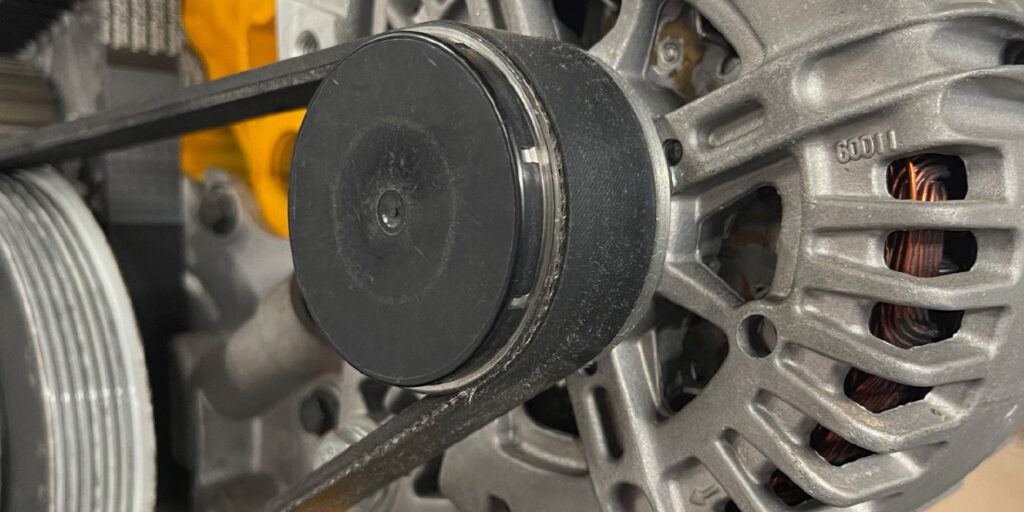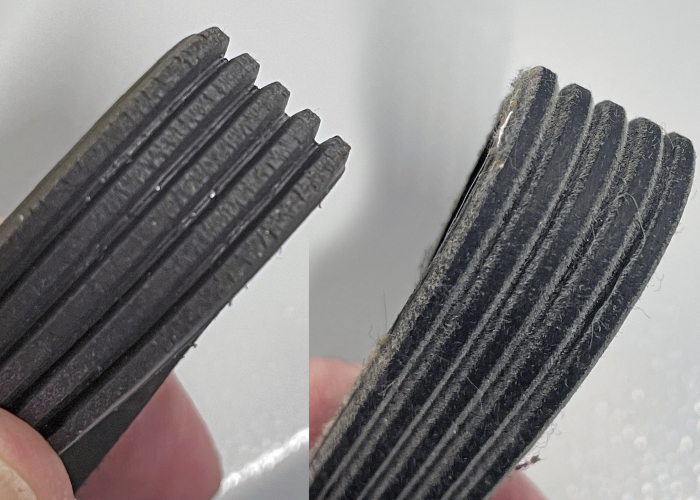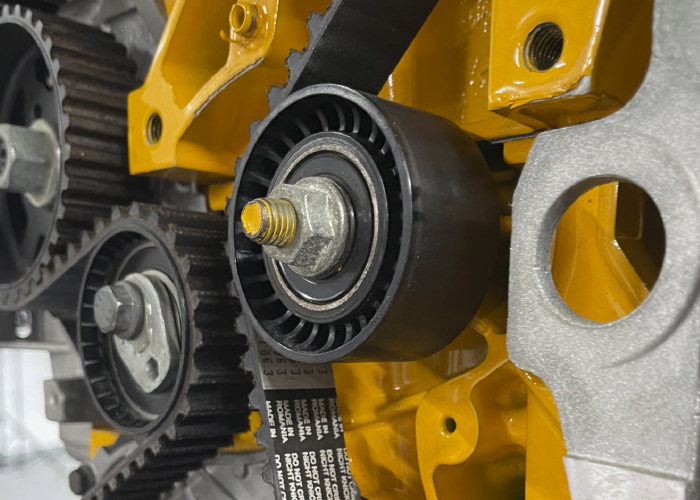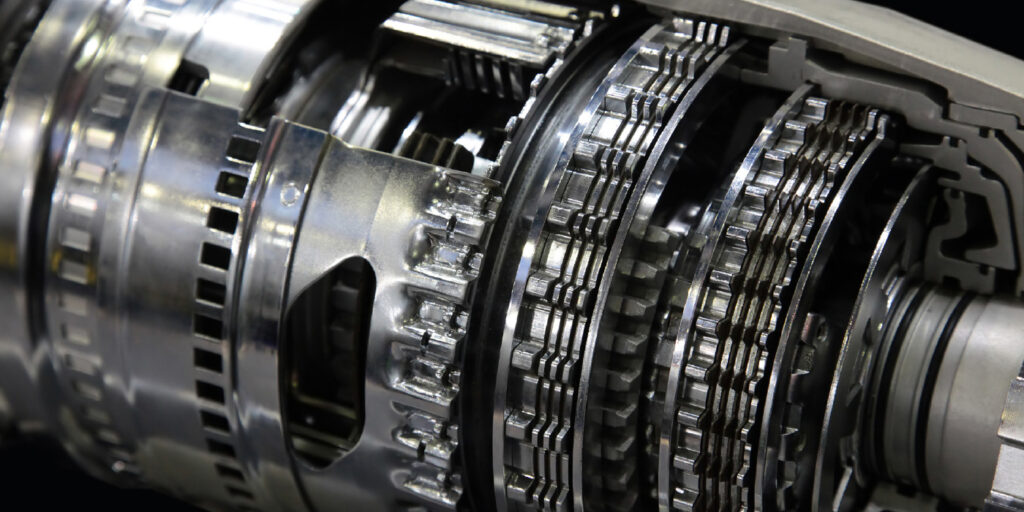What is new with belts? A lot! During the past seven years, engines have changed to increase efficiency and the belts have had to play catch up. The evolution of belts is matching the evolution of passenger car tires. While the tread of belts may be staying the same, new materials are changing how belts wear and ultimately how they are serviced.
It doesn’t matter if it is a v-belt, serpentine belt or stretch belt, all belts need friction to operate. It sounds counterintuitive, but friction between the belt and pulleys allows power transmission from the crankshaft to an alternator, power steering pump or AC compressor. To produce these levels of friction, the belt and pulleys need surface area, this is why they have grooves that line up with great precision.
Just like a tire, the friction between the belt and pulleys wears away at the belt, usually on the tops and walls of the ribs. Eventually, the grooves of the pulleys will bottom out on the grooves of the belt, and then the belt will not be able to generate friction and start to slip.
If you look at the maintenance schedule of most vehicles, it is hard to find a service interval for the belts. You will see that at every oil change it is recommended to inspect the belts. Inspecting the belt is not a visual inspection. The inspection is of the grooves and how they are worn. about:blank
Inspection tools measure the profile of the grooves on the belt. Eight teeth should fit in the grooves of the belt. If you can move the tool side-to-side, the belt is worn below specifications. If the tool can’t move, you know the belt is within specifications.
If you turn the tester and put your index and ring fingers through the holes, you can get into some tight areas. The edge is set to the height of the belt groove. Press the narrow edge of the gauge into each belt groove. The edge should not “bottom out” in any of the grooves.
It is rare to find a belt that has failed because it has broken or delaminated. In the past, the belts were made of organic fabrics with maybe a few strands of steel. Today, a serpentine belt might have Kevlar and other engineered fibers fused together. The only way to damage the structural elements is by misalignment of the belt or damage during installation.
What about cracks in the belt? Yes, cracks are an indication of an issue with the belt. But, with today’s modern materials, cracks are not an issue and the majority of the time the belts will be worn below specifications before cracking occurs.
The other inspection item is the tensioner. If the tensioner is worn, the belt will slip and then catch suddenly. Tensioners are more than just a spring. Most tensioners have a dampener mechanism inside or connecting to the arm. This dampener prevents wild movement of the tensioner’s arm and pulley. This helps to keep the belt tension within specifications as the speed of the crankshaft and loads change.
The tensioner dampener is a sacrificial part that will wear out over time. When it does, this is when rapid changes in the belt tension occur. This can be seen through belt flutter and even excessive movement of the tensioner.
If the dampener is not able to control the tensioner arm, it can cause fluctuations in tension. The belt may oscillate between too little tension and too much tension. The belt will slip and catch, causing noise and vibration. OEMs and belt manufacturers recommend the tensioner to be replaced with the belt.
















